After a fun sunrise visit to El Tatio Geysers, Sam and I signed up for yet another tour. This one was a sunset tour of Atacama’s Valley of the Moon and I was pretty excited to see what magical landscapes the desert had to offer. Spoiler alert: sunset did not disappoint!
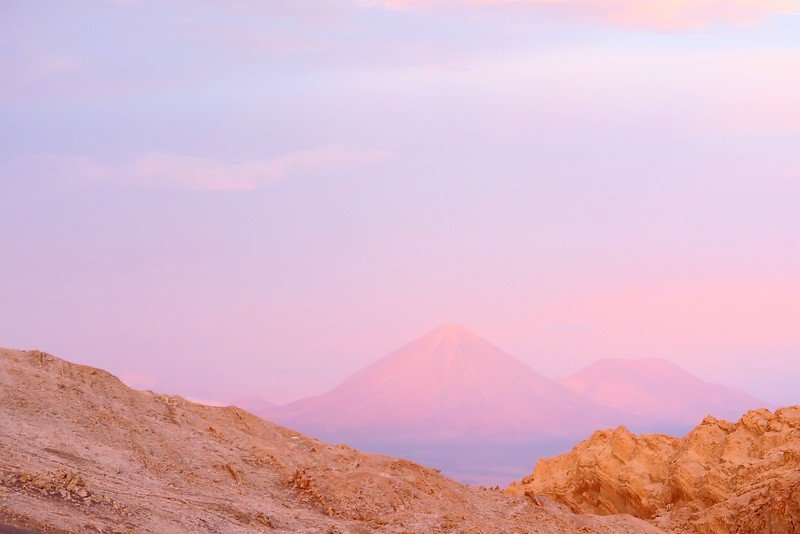
Our tour left San Pedro de Atacama at 4:00 p.m. and we had a very short drive ahead of us. The Valley of the Moon is located just 13 kilometres outside of town, so by the time we got comfortable in our seats, we were already there.
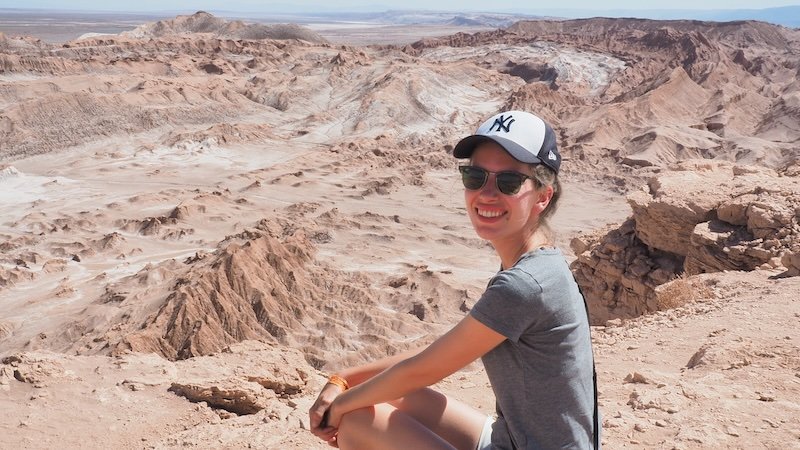
First Impressions of the Moon Valley: Why It’s Called “Moon Valley”
As soon as we climbed out of the truck it became pretty evident how the valley gets its name. In front of us lay an expanse of stone and sand formations carved by millennia of wind and water. Sprinkled like flour in a messy kitchen, there were white patches of salt which marked the remains of ancient lakes that have long since evaporated.
This is your iconic postcard shot of Atacama,” our guide said as we pulled up to the canyon’s ridge and looked out at the Cordillera de la Sal which stretched out before us.
Snap, snap, snap!
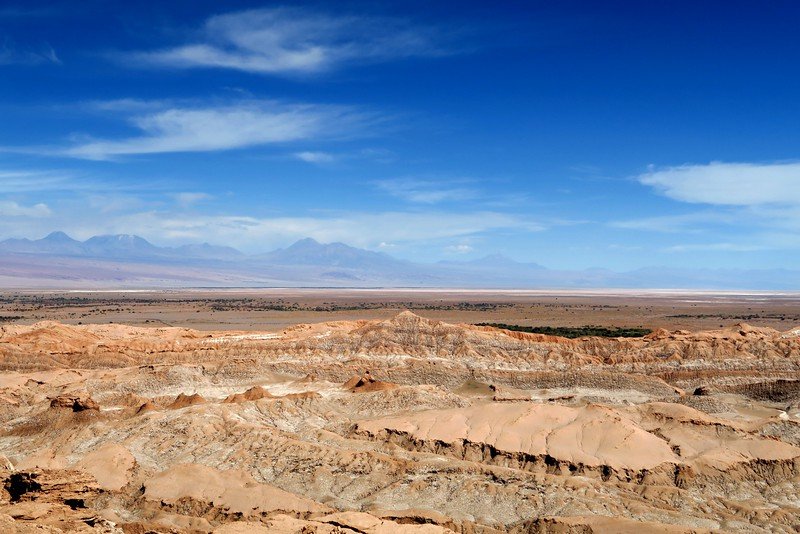
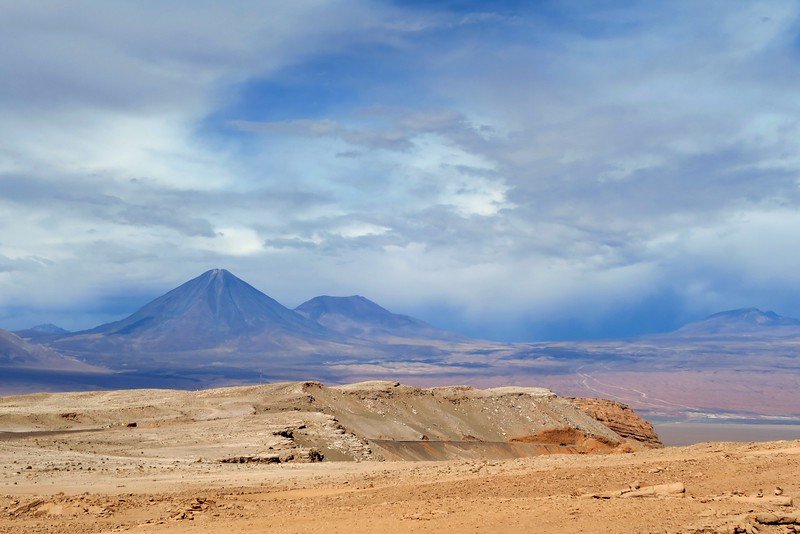
Exploring the Salt Caves: Entering the Cañon de Sal
After going trigger-happy at the sight of the canyon, we continued on to the salt caves, also known as Cañon de Sal. When our guide asked us if we were claustrophobic back in town, I thought we might be crawling through some narrow spaces, but then he really downplayed it on the drive over and I completely forgot that the caves were even on the itinerary.
The tour of the salt caves started out easy enough. We entered a gorge that didn’t seem all that impressive at first glance, but it grew narrower and narrower the deeper we walked in, until it finally became a dark tunnel. Our guide had asked everyone on the truck to bring their cellphones along so we could look at the salt crystals, but once we were in the tunnel, it turned out that we really needed the cellphones as flashlights.
The thing about that tunnel is that once you’re in there, there is no turning back. The space is only wide enough for a group to snake through in a single file, so if you change your mind, you’re blocked in by those behind you. Not all of us had brought our cell phones out to the desert so there was a bit of stumbling, crawling, and blindly feeling our way around, but when we finally emerged we were met with a landscape that resembled Mars (or at least it looked a lot like the scenes from The Martian!)
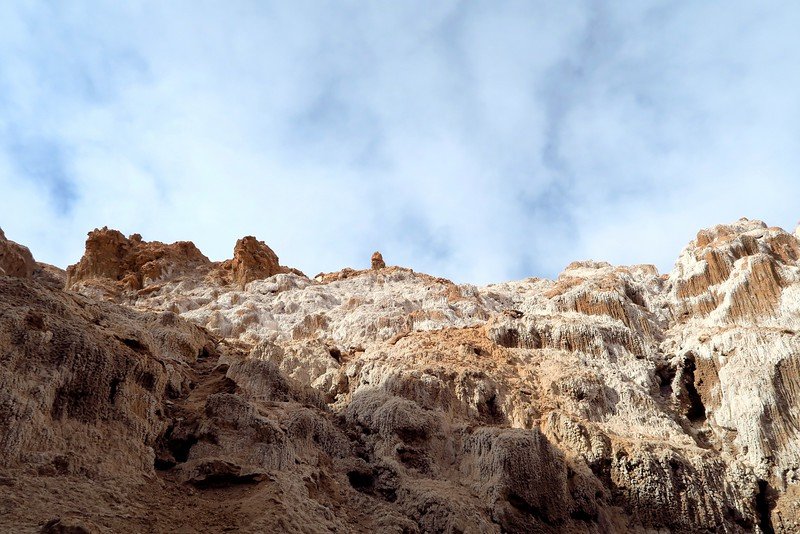
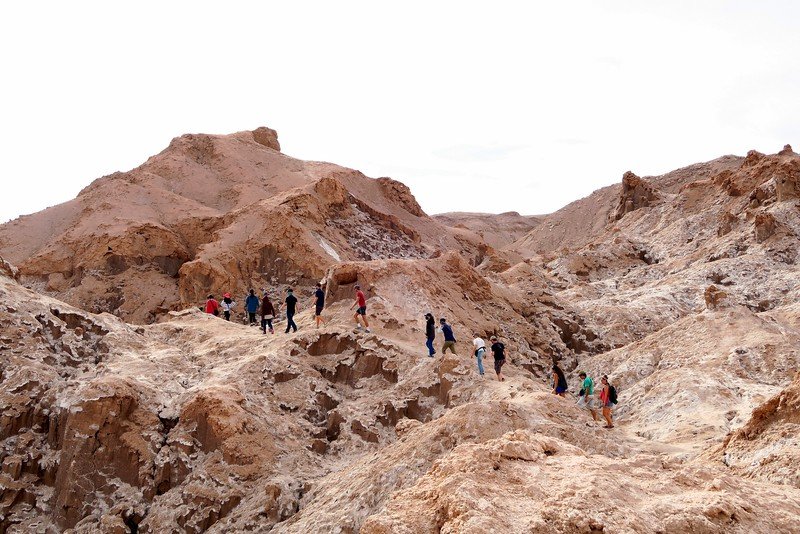
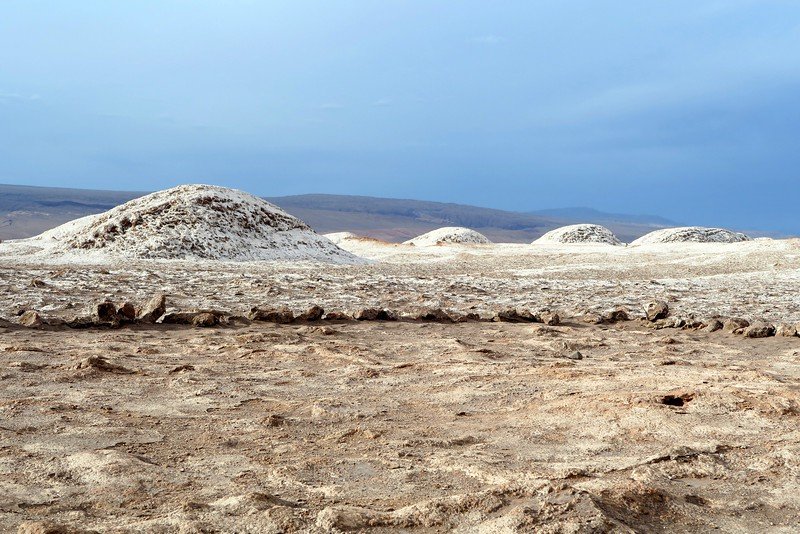
Pretty dazzling, right?
Watching the Valley of the Moon Sunset: The Final Climb
By then, we were getting close to sunset, so it was time to hop back in the truck. We took a short detour to visit some salt flats and from there we hiked up to a ridge to watch the sun do its magic.
The wind was whipping our hair and blowing sand in our faces by the time we reached the top, but as far as sunsets go it was a pretty spectacular one.
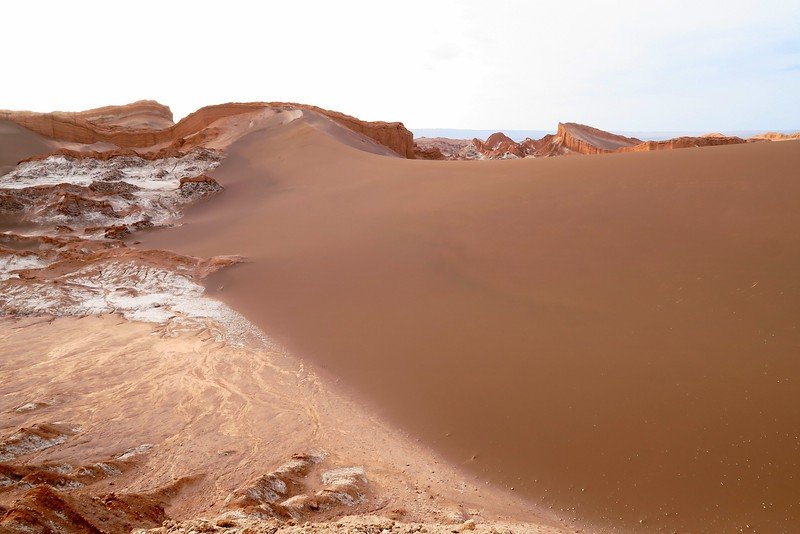
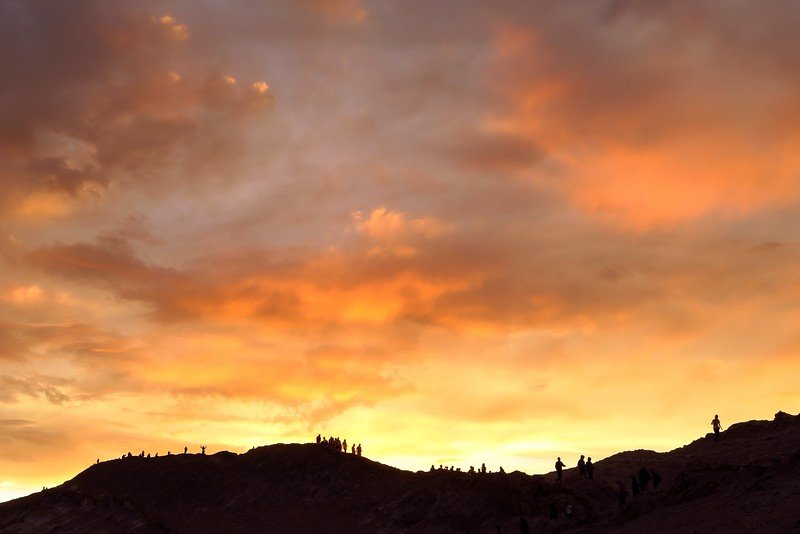
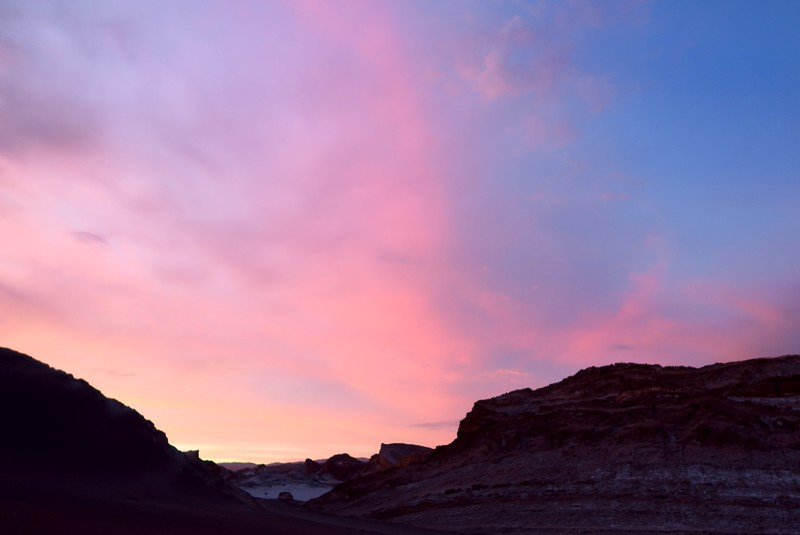
On the way back our guide let us climb on top of the truck and ride with the cool evening breeze blowing in our faces. We had to climb back down once we approached the town, but it was a pretty nice way to finish up our sunset tour of the Atacama Desert, Chile.
Tips for visiting the Valley of the Moon at sunset:
- Wear shorts. Afternoons in Atacama are really hot, and while it does cool down towards sunset, it’ll be nowhere near the freezing temperatures you experience in the desert in the early morning. I was perfectly fine in shorts and I just made sure to bring a sweater for later in the day.
- Bring lots of water. Our guides insisted that we each carry a 1L bottle of water (they even made people run to the convenience store before heading out on the tour), and I was glad we had them. It may seem like a hassle to lug a bit bottle around, but you’ll be glad once you’re out in the scorching sun.
- Shield yourself from the sun. Don’t forget to wear sunblock, a hat, and sunglasses.
- Choose your footwear wisely. Closed shoes are best for this activity. You’ll be crawling through caves, hiking up rubbly slopes, and trekking through a few sandy stretches.
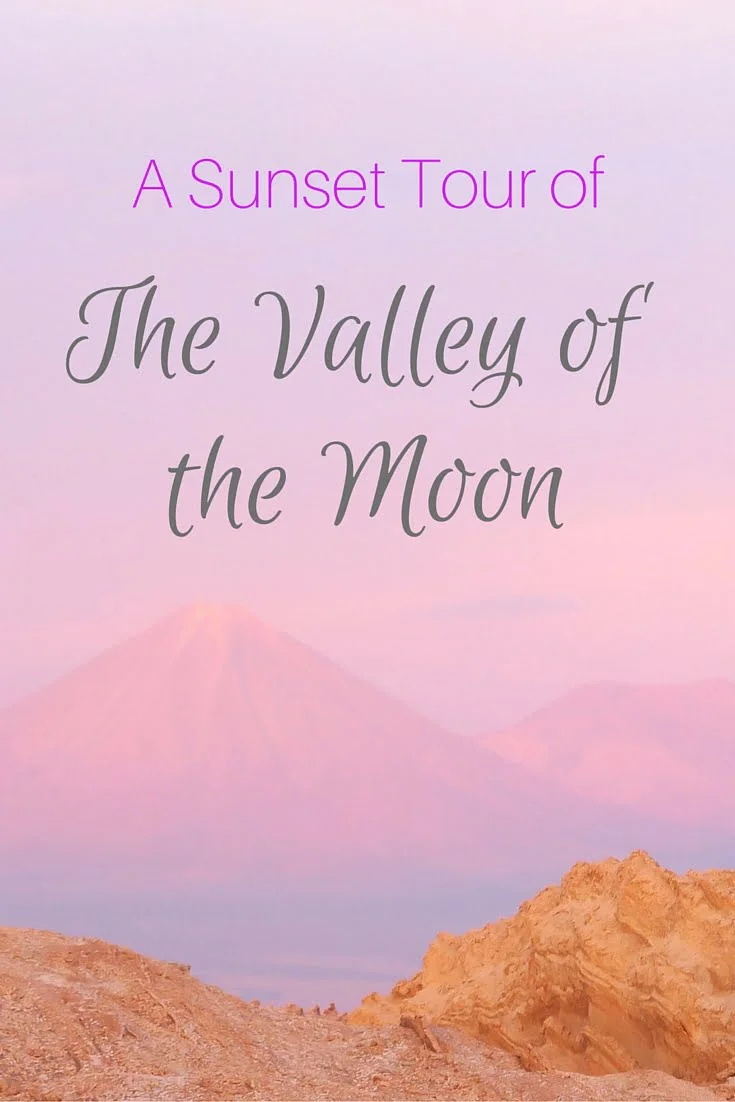
Valley of the Moon Sunset Guide: Plan It, Pack It, Photograph It (and Love It!)
Why Sunset Is the Showstopper
Valley of the Moon is already otherworldly, but late-day light turns the ridges and dunes into a living painting. As the sun sinks, ochres become ambers, whites turn to blushing pinks, and the Cordillera de la Sal glows like a kiln. Add wind-whipped sand for drama and a bonus afterglow that lingers long enough for photos without harsh shadows. Magic.
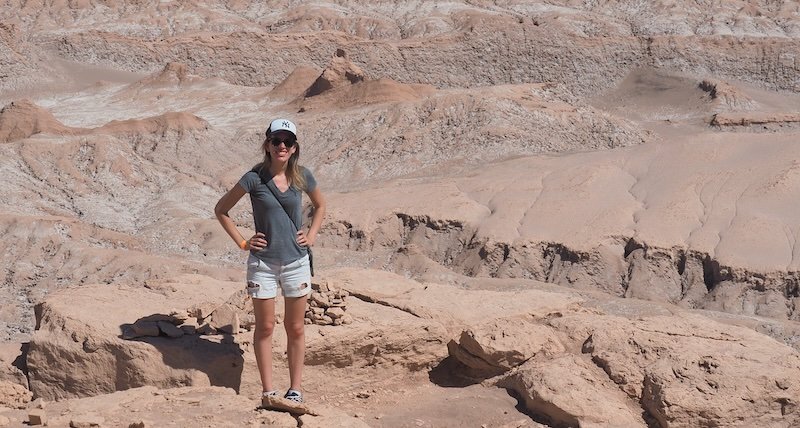
How to Visit: Guided Tour vs. DIY
You can absolutely hire a tour in San Pedro de Atacama (most leave around 3–4 p.m.), or do it yourself with a bike or rental car. Here’s the quick compare:
| Option | Best For | What You Get | Things to Note |
|---|---|---|---|
| Small-group guided tour | Stress-free travelers, first-timers | Transport, park entry support, guide stories, time-saving route | Fixed timeline; quick stops; mixed fitness levels |
| Private tour | Photographers, families, mobility needs | Flexible timing, custom stops, guide attention | Pricier; book ahead |
| Self-drive | Confident drivers, sunrise/sunset flexibility | Total freedom, set your pace | Gravel/rippled roads; check entrance hours; carry cash/water |
| Bike + park shuttle/walks | Adventurous & budget-minded | Slow travel, scenic approach | Wind can be fierce; bring lights for ride back |
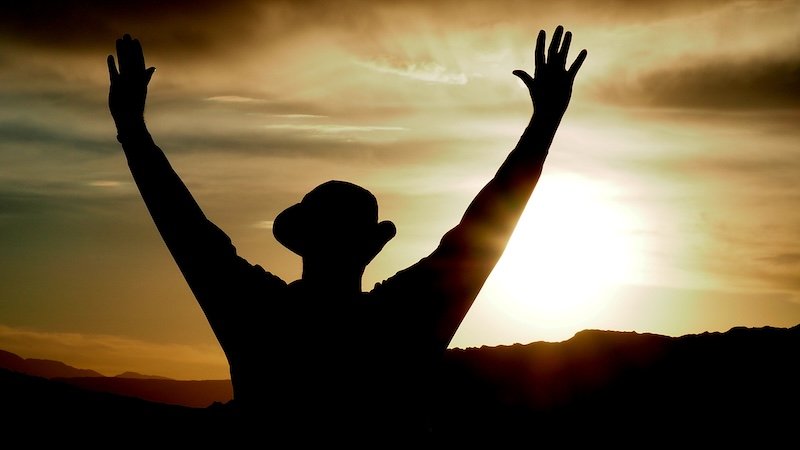
What a Typical Sunset Tour Looks Like
Exact stops vary by operator, but a common flow looks like this:
- 15:30–16:00 – Hotel pickup in San Pedro, quick headcount + “you brought water, right?” talk.
- 16:15 – Park entry + first vista of Cordillera de la Sal (cue 200 photos in 2 minutes).
- 16:45 – Cañón de Sal / salt caves walk: squeeze, duck, marvel, emerge into that “are we still on Earth?” amphitheater.
- 17:30 – Micro-hike to a ridge (various viewpoints) for changing colors; snack stop if included.
- 18:15–19:30 – Golden hour → sunset → afterglow. Wind picks up; hold onto your hat and your jaw.
- Return – Post-sunset drive, stars begin to pop; arrive town early evening.
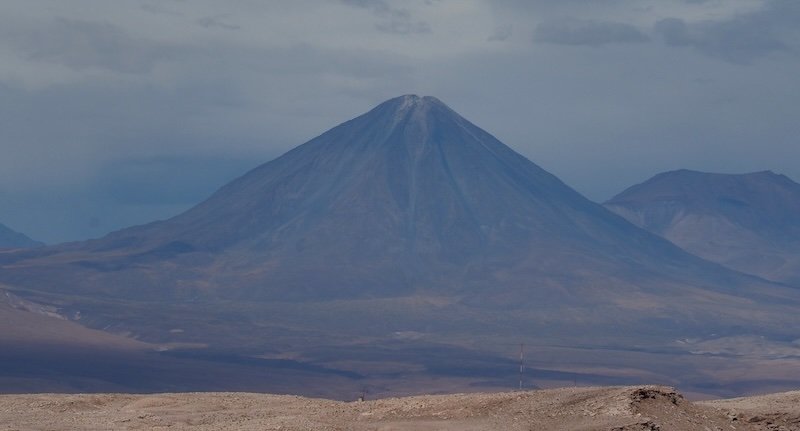
What to Pack (Checklists You’ll Actually Use)
Desert Necessities
- 1–1.5 L water per person (minimum)
- Sunscreen (high SPF), lip balm with SPF
- Hat with a brim (chin strap if you have it—wind!)
- Sunglasses (polarized are great here)
- Light sweater/windbreaker for post-sunset chill
- Closed shoes with grip (trail runners or light hikers)
Nice-to-Haves
- Neck gaiter or scarf (sand shield)
- Headlamp/phone light for caves & afterglow
- Snacks (salty > sweet at altitude)
- Small first-aid kit (band-aids, pain relief)
- Cash for entry/park extras if you’re DIY
Photo Kit (Keep It Lean)
- One wide-to-mid lens (e.g., 24–70mm) does 90% of the job
- Microfiber cloth (wind + dust = smudgy lens)
- Mini tripod for blue-hour sharpness
- Extra battery (cooler temps drain faster)
- Phone backup with RAW/HDR on
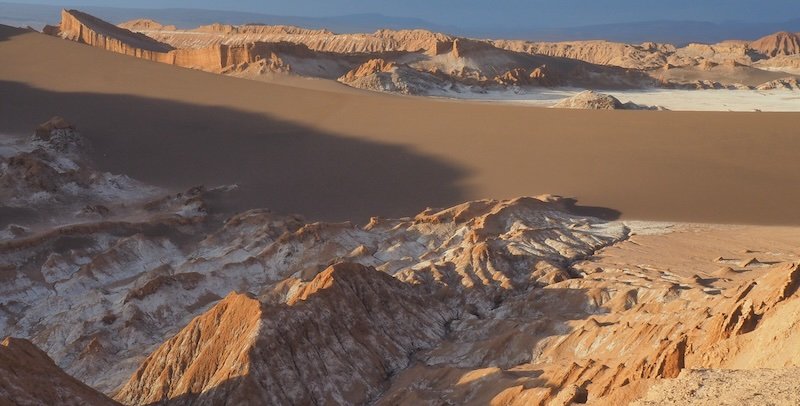
What to Wear (Season-Smart)
- Summer (Dec–Feb): Hot afternoons; a breathable tee + shorts work. Add a long sleeve for the breeze on the ridge.
- Shoulder (Mar–May & Sep–Nov): Layers are your best friend. Quick-dry pants, tee, light fleece, wind layer.
- Winter (Jun–Aug): Sunny but chilly, wind bites. Base layer + mid layer + shell, beanie for comfort post-sunset.
Safety & Etiquette (AKA “Be the Awesome Visitor”)
- Stay on marked paths. Dunes and salt crusts are delicate; one footprint can last months.
- Mind the wind. Gusts can be sudden; keep cameras leashed and hats secured.
- No drones. Protected area, wildlife, and other humans will thank you.
- Carry in, carry out. Even “biodegradable” peels don’t belong here.
- Caves: If you get anxious in tight spaces, tell your guide early and take the alternate path if offered.
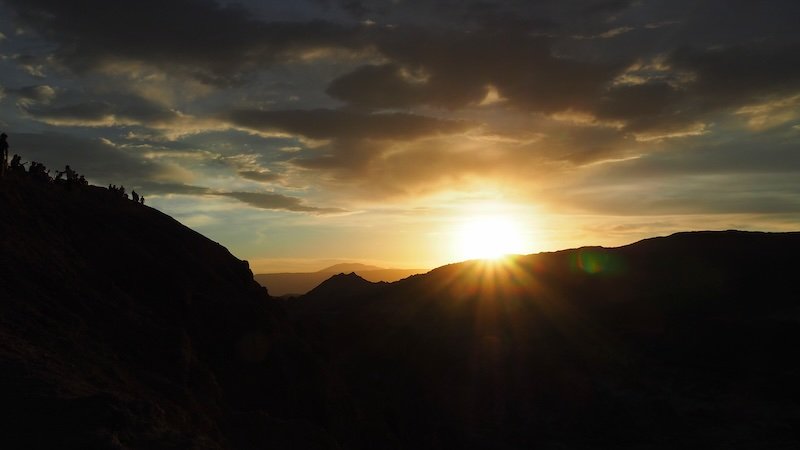
Photography Tips for Moon-Valley Magic
Work the Light
- Golden hour: Side-light those ridges to show texture; backlight for glowing edges.
- Blue hour: Tripod + low ISO = crisp, cinematic layers; the salt turns silvery.
Compose for Drama
- Leading lines: Use dune spines and ridgelines to pull the eye toward the volcanoes.
- Scale: Include a tiny human on a distant ridge (on-trail only) to show the vastness.
- Foreground interest: Salt crystals, cracked clay, a line of footprints (yours) in the sand.
Handy Camera Settings (Starting Points)
- Landscape: ISO 100–200, f/8–f/11, shutter as needed (raise ISO if wind shakes the world).
- Handheld in wind: Aim for 1/250s or faster; brace against rocks, exhale as you click.
- Phone shooters: Turn on grid, tap to lock focus/exposure, use HDR, and prop your phone on a rock for sharp blue-hour frames.
The Best Viewpoint Styles
- Big-Vista Balcony: Drive-up ridges with sweeping views—minimal walking, maximum wow.
- Micro-Hikes: 10–30 minutes on uneven ground to catch unique angles and fewer people.
- Salt-Canyon Glow: Narrow corridors where light bounces into peachy walls—carry that phone light!
- Sand Dune S-Curves: Be mindful of closures; when open, stay on existing tracks to protect the crest.
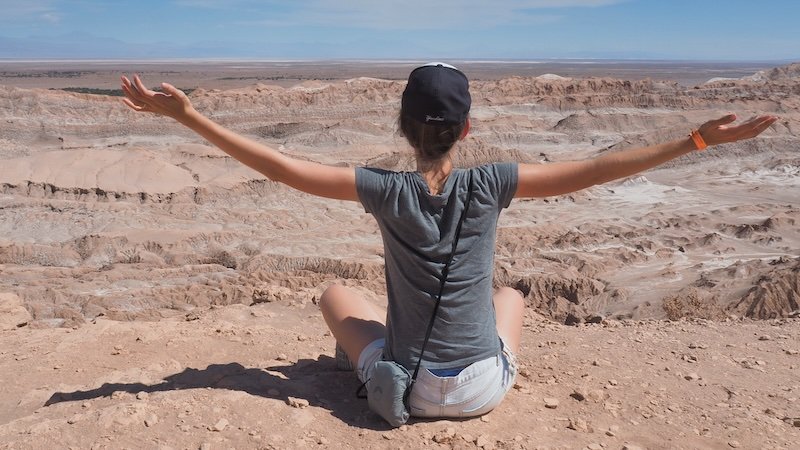
Sunset vs. Sunrise (Which One’s for You?)
| Time | Pros | Cons | Vibe |
|---|---|---|---|
| Sunset | Warm colors, long afterglow, easier logistics | Windier, more visitors, park exits right after | Buzzing & social |
| Sunrise | Calmer air, fewer people, soft pastels | Colder, early wake-up, limited access pre-opening | Quiet & contemplative |
If you’re a photographer, sunset for color + sunrise for serenity is the dream duo.
When to Go: Seasons, Wind & Moon Phases
- Year-round: Dry desert means it’s on the table every month.
- Wind: Afternoons often breezy; spring can be gusty—bring that shell.
- Winter nights: Crisp and cold post-sunset; bundle up.
- Moon matters: For starry photos later, aim for new moon; for silver-lit landscapes, a waxing/waning gibbous can be gorgeous.
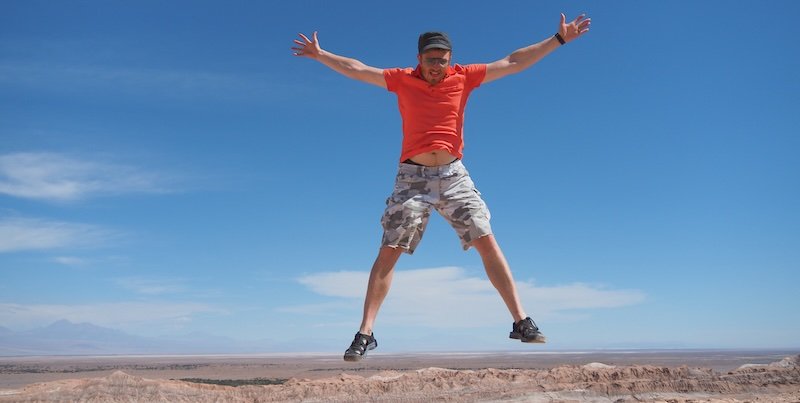
Budgeting & Booking (No Surprises)
- Most tours include: Transport, guide, park logistics, sometimes a snack.
- Usually not included: Personal water, tips, extra layers (bring your own everything).
- Book early in high season (Dec–Feb & Jul), especially for small groups or private guides.
- Ask these questions:
- How many stops and how long at each?
- Does the tour include salt caves (and can I skip them if I’m claustrophobic)?
- What’s your maximum group size?
- Do you supply lights/snacks, or should I bring my own?
Pair It With: One-Day San Pedro Combos
- Geysers + Moon Valley (your day!): El Tatio at sunrise → nap/brunch → Valley of the Moon at golden hour.
- Lagoons + Sunset: Laguna Cejar float or Baltinache morning → lazy lunch → Moon Valley glow.
- Culture + Craters: Quitor Pukará/ Tulor ruins + town wander → Moon Valley late.
Leave No Trace in the Atacama
- Stay on durable surfaces.
- Pack out all trash, even tiny wrappers.
- Respect wildlife and other visitors’ space.
- Take only photos, leave the crystals and stones.
- Honor closures—they protect what you came to see.
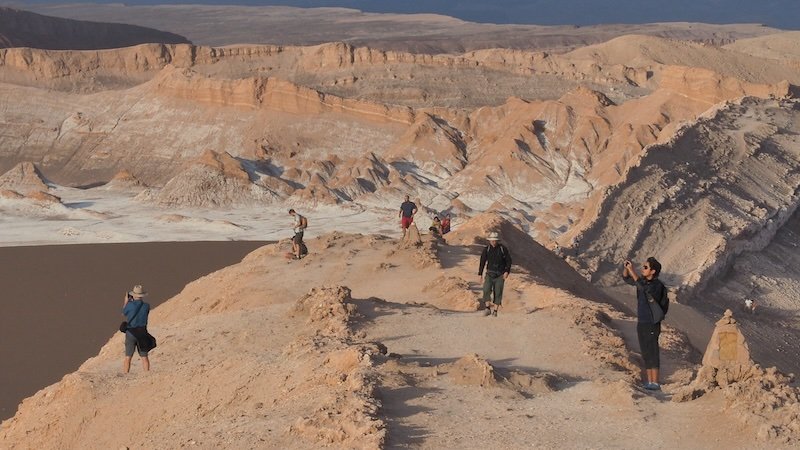
Valley of the Moon Trip: 12-Question FAQ
How far is Valley of the Moon from San Pedro de Atacama?
It’s roughly 13 kilometers (a short 20–30 minute drive depending on stops). That means minimal van time and maximum ridge time.
Can I visit without a guide?
Yes. Self-drive is common. Check entrance hours, bring cash/water, and plan your exit to beat closing. Biking is possible but wind + darkness after sunset make a return light essential.
Are the salt caves mandatory?
No. If tight spaces aren’t your thing, tell your guide—there’s usually an alternate path to rejoin the group for the big views.
Will I feel altitude sickness?
San Pedro sits around 2,400 m (7,874 ft). Most visitors feel fine, but pace yourself, hydrate, and avoid overexertion if you’ve just arrived. Save big hikes for day two.
What’s the best footwear?
Closed-toe shoes with decent grip—think trail runners or light hikers. Sandals + salt caves = regrets.
Can I fly a drone?
No. Drones are prohibited to protect wildlife, visitors, and fragile landscapes. Rangers enforce this.
How windy does it get?
Afternoon winds are common—sometimes playful, sometimes persuasive. Bring a wind layer, keep gear strapped, and shield your camera when swapping lenses.
What if the sky is cloudy?
Even better for color and texture—clouds catch fire at sunset. Only heavy dust storms or rare rain would dampen a visit.
Is there drinking water inside the park?
No. Bring your own 1–1.5 L minimum per person. The desert is bone-dry even when you don’t feel sweaty.
What about restrooms?
Expect basic facilities near main entrances or parking lots. Don’t count on mid-trail options—go when you can.
Can families with kids do this?
Yes. Stick to shorter walks, bring sun protection and snacks, and keep little explorers on designated paths—cliff edges are closer than they look.
Is stargazing possible right after sunset?
You’ll get a few bright stars after civil twilight, but the real Atacama sky show kicks in later. Consider a night astronomy tour back in town for telescopes and expert sky talk.
Where’s the best place you’ve watched the sunset?

Lugging around water is something I have become used to in travelling haha! This place looks so beautiful.
This is awesome! What tour did you go with?
Good question! I forgot to mention that; I went with “Grado 10” and they are the same company I did my sunrise tour of the geysers with.
Oh my goodness this sounds like an amazing experience! Bit creepy to be crawling through such narrow places but I’m sure you’ll remember the experience for ever. Great post, thank you so much for the inspiration!
Love,
Yara
Love this, can’t wait to visit this place. So beautiful and whimsical looking. Can I make a small suggestion? You should add “pinnable” images to your blog posts. I don’t mean add the “pin it” button, but you should format your photos so that they appeal to the Pinterest interface (ie. vertical). I really wanted to pin this so that I could save it to one of my boards (which would get your post more exposure) but since you didn’t have any images formatted for Pinterest I didn’t pin any of them. But I’m sure there are others out there who would also pin your images more if they were formatted (or at least one at the very end of the post) for Pinterest and just imagine how much more traffic that would drive to your blog! Just a tip from one blogger to another! Beautiful photography though! Love that top photo, I just wish it was vertical!
Thanks for the suggestion, Kayti. I’ve slowly started adding pinnable images to my posts (one of my many ongoing projects!), but it’s still a work in progress. I’ve now added a pinnable one to this post too. Thanks for reading along. 🙂
That looks amazing, Audrey. I’ve been to Chile but ran out of time. After seeing your photos and reading your post I wish I had made the time to visit the Valley of the Moon! I really enjoyed cruising around Cape Horn though
http://travel2next.com/stella-australis-cruise-ushuaia-to-punta-arenas-chile/
That’s so cool that you made it to Cape Horn! I feel like I also didn’t have enough time in Chile. I got to see Arica, Atacama, Santiago, Valparaiso and Easter Island, but the Lakes District, Patagonia and beyond got put on hold until next time. Your photos of the place look amazing!
Holy cow the colors, the vastness of the landscape, and the amazing trek make this place so surreal. This is actually my first time reading about this place and it looks absolutely awesome. I just love that vast landscape 🙂
I didn’t know such a place exists!! It’s stunning, and your photos really make me dream. Thanks for sharing all you traveling tips – it inspires me to never stop exploring!
Oh wow, gorgeous gorgeous photos!! To answer your question, I think we have seen the best as in most vibrant sunsets in Thailand! We were lucky that the sky performed there for us every single night!!